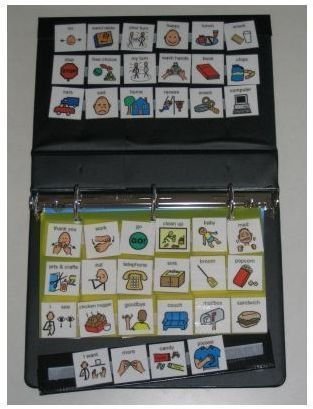Children with Specific Learning Disabilities Act: Exploring the Effects
What’s the IDEA?
The Individuals with Disabilities Education Act (IDEA) originated in 1975 as the Education for All Handicapped Children Act (EHA), or Public Law 94-142. It evolved between 2004 and 2006 for reauthorization as IDEA 2004 with additional details added for clarification and improved efficacy. IDEA, in conjunction with the No Child Left Behind Act (NCLB) of 2002, addressed the needs of children with specific learning disabilities. Act supporters argue the main purpose of each is to make certain that all children, regardless of circumstances, receive a fair and equal appropriate education.
Students with specific learning disabilities require certain accommodations in order to remove any barriers to learning and to provide them with the opportunity to participate in the least restrictive environment (LRE). Educators bear the responsibility of ensuring that students with specific learning disabilities meet the objectives designated in their Individualized Education Plans (IEPs).
What’s with all these acronyms?
If you read many special education articles, you are likely to notice a number of acronyms sprinkled liberally throughout; here are some of the most common, along with their definitions:
IDEA - Individuals with Disabilities Education Act
FAPE - Free Appropriate Public Education
NCLB – No Child Left Behind (Act)
LRE – Least Restrictive Environment
IEP – Individualized Education Plan/Program
LD – Learning Disabled/Disabilities
AAC – Augmentative Alternative Communication
PECS – Picture Exchange Communication System
What are Specific Learning Disabilities?
According to the U.S. Department of Education, school attendance is compulsory and all children must attend public or private schools, or receive approved home school instruction. Children with specific learning disabilities also have the right to a free appropriate public education (FAPE) equivalent to the opportunity enjoyed by their peers with typical learning capacities. While reading and language learning disabilities are the most common, other specific learning disabilities exist.
Definition of Learning Disabilities
A learning disability has a neurological basis in which a child essentially experiences a “disconnect” signal when he or she tries to process incoming data. This causes the child to experience difficulty in comprehension and in accurately reading, calculating math, processing language, or organizing information as he or she receives it. LD Online reported the National Institute of Health figures that as many as one out of seven individuals, or fifteen percent, suffer from some type of specific learning disability.
Specific Learning Disabilities
Learning disabilities encompass reading, language, math, and processing skills. Some of the most common specific learning disabilities, courtesy of LD Online, include the following:
-
Auditory and Visual Processing Disorders – difficulty processing language (even though individual has normal hearing and vision).
-
Dycalculia – difficulty understanding math concepts and performing math calculations.
-
Dysgraphia – difficulty forming letters properly within a defined space.
-
Dyslexia – difficulty understanding written words; also known as a language or reading disability/disorder.
-
Non-verbal Learning Disabilities – difficulty comprehending and differentiating non-verbal cues— basically anything that is not written or spoken—such as facial expressions, gestures, and body language; also struggle with organizational skills and memory recall.
How Can Assistive Technology Help Accommodate Learning Disabilities?
The field of instructional technology continues to grow to facilitate the ongoing special needs of students with specific learning disabilities, and the educators and professionals who work to accommodate those students. As its name implies, assistive technology is any device or system that assists or aids an individual toward overcoming barriers and achieving increased functionality. These devices range from simple items like picture cards, to more complex items including specially designed computers, keyboards, and software.
Specific Devices for Specific Learning Disabilities
The most appropriate assistive technology device for each student depends on his or her specific learning disability and the skills he or she lacks. Here are several types of devices that would be appropriate for specific learning disabilities:
-
Reading and language processing disabilities: visual representation systems, such as small whiteboards, picture cards (such as Picture Exchange Communication System, or PECS), dry erase calendars and schedule boards; auditory devices, such as “smart pens” (record the teacher’s words), tape recorders, and personal FM (frequency modulation) systems; audio books; and optical character recognition (OCR) devices that allow students to scan reading material, then retrieve it and hear it through a voice synthesis function.
-
Math difficulties: calculators, math flashcards, and math-oriented games and manipulatives; electronic math worksheets (software for the computer), and “talking” calculators.
-
Writing difficulties: graphic organizers, outliners, and alternative keyboards; portable word processors and proofreading software; speech recognition and speech synthesis software; and “talking” spellcheckers.
-
Non-verbal difficulties: picture cards with faces indicating different emotions, along with words describing the emotions; tape recorders; graphic organizers, database software for electronic notes, and electronic information managers.
The key for educators is to match the accommodation with each student’s IEP, to ensure that the student is receiving the maximum benefit, meeting his or her objectives, and achieving the designated academic goals. In addition, implementing the proper devices helps keep the school in compliance with IDEA and NCLB.
